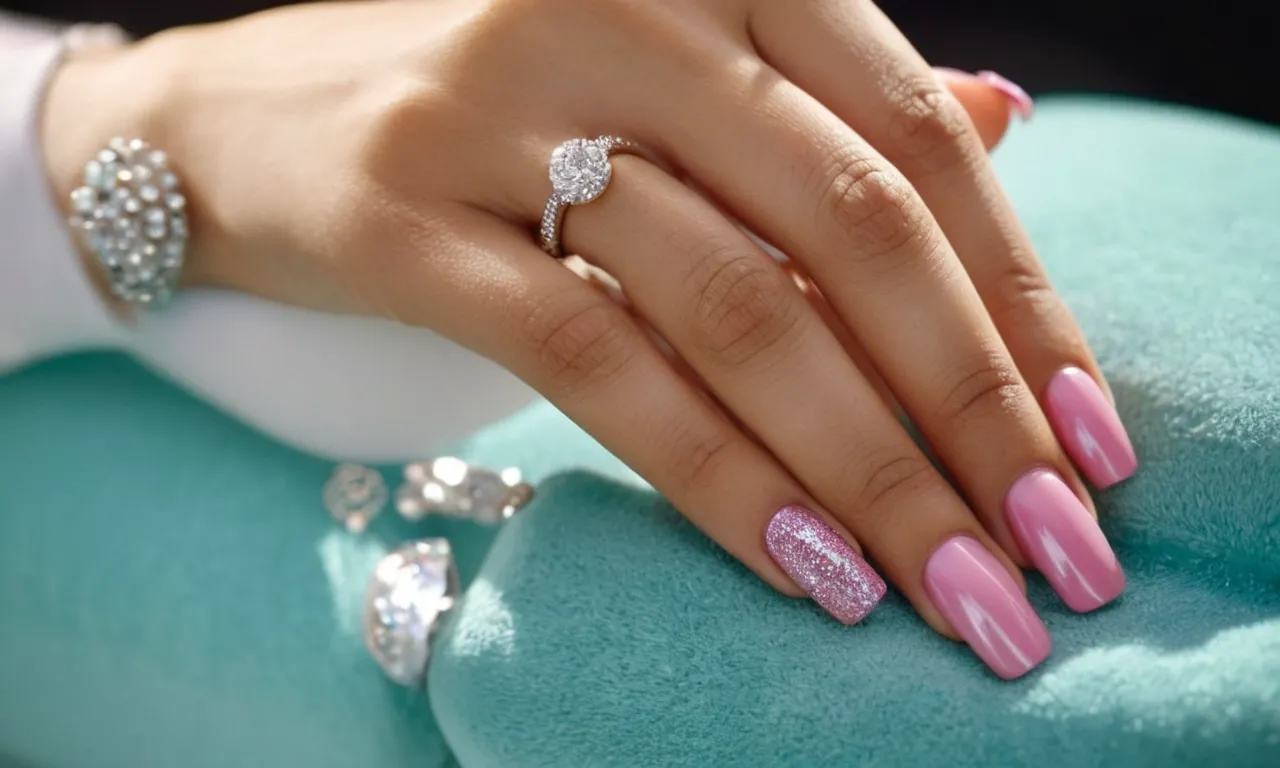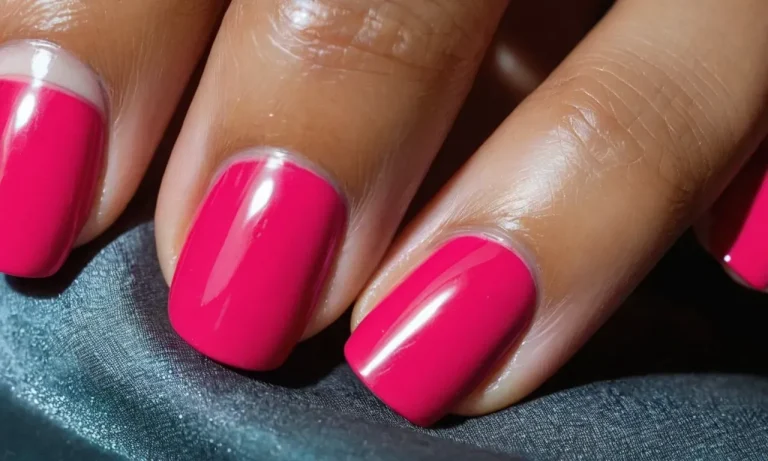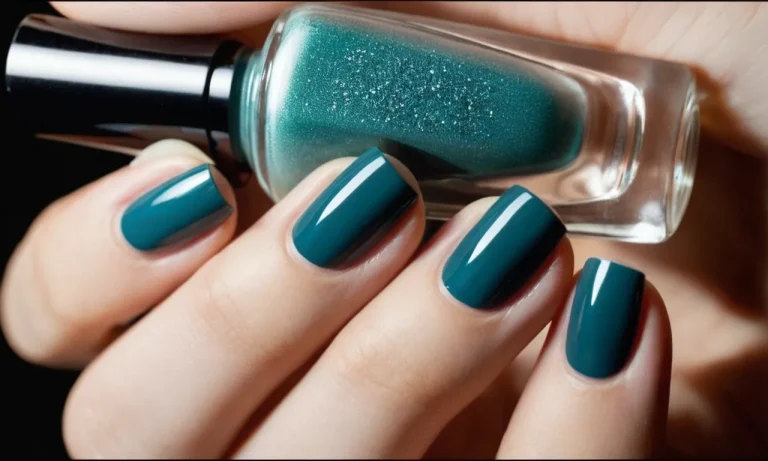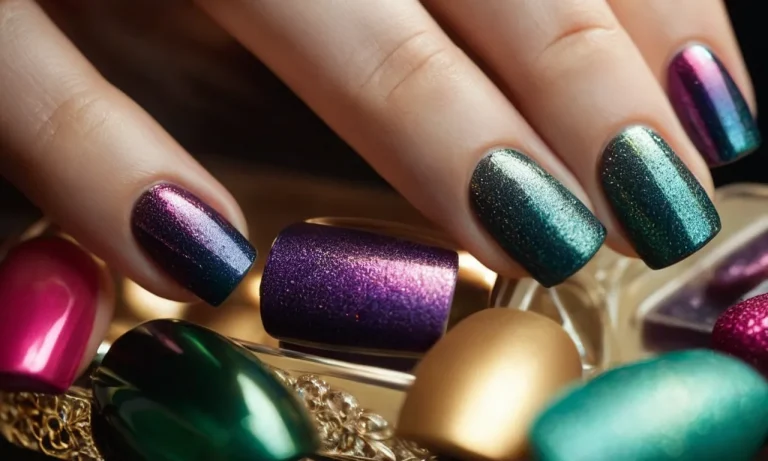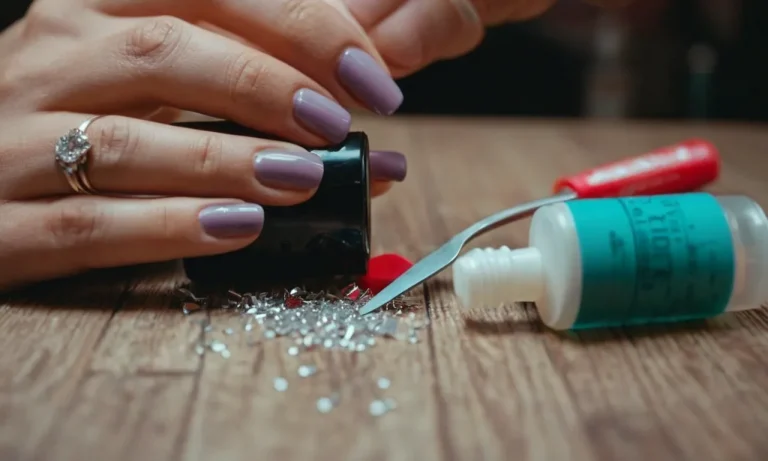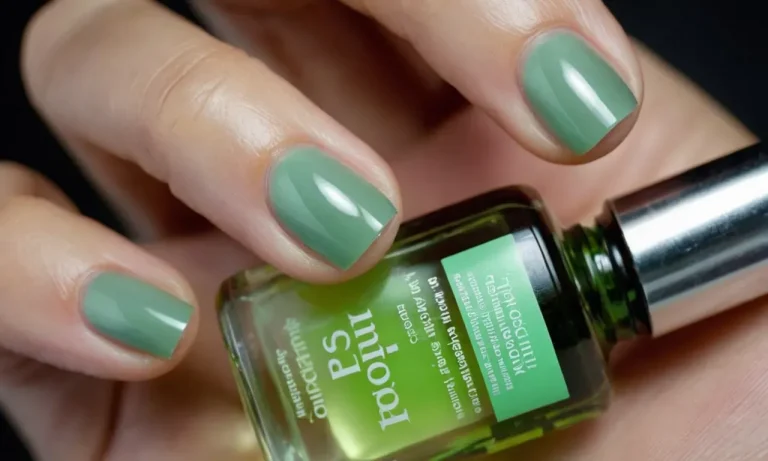Can I Paint My Nails After Removing Acrylics?
If you just removed your acrylic or gel nail polish and are wondering whether you can immediately paint your natural nails, you’re not alone. Many people want to paint their nails soon after a removal, but aren’t sure if that’s safe or recommended.
The quick answer is yes, you can paint your nails after removing acrylics or gels, but you need to properly prepare and care for your natural nails first to avoid damage and breakage. In this comprehensive guide, we’ll go over everything you need to know before painting post-acrylic nails.
Let Your Nails Recover
Remove Any Remaining Product
After removing acrylic or other artificial nails, it’s important to remove any remaining glue or nail product from your natural nails. Gently file off any remaining acrylic with a 100/180 grit file. Be careful not to file too hard or you could thin and damage the natural nail.
Use acetone or nail polish remover on a cotton pad to remove any remaining adhesive or acrylic residue. Wash your hands with soap and water when finished.
Allowing products to remain on the nails can lead to irritation, infection, and can prevent the nail bed from recovering properly. Take your time with this step and be thorough but gentle.
Moisturize Nails and Cuticles
Once your nails are free of acrylics and adhesive, it’s time to moisturize. Your nails and cuticles will be dry and ragged from the removal process. Apply a thick moisturizing cream or oil to hydrate them. Gently push back the cuticles with a towel or cuticle pusher.
Avoid cutting cuticles, as this can lead to infection. Massage the cream or oil into the nails and cuticles until fully absorbed.
Try a moisturizer containing jojoba oil, vitamin E, and shea butter for maximum hydration. Nails need moisture to remain strong and prevent peeling or cracking. Consistently moisturize them daily while they recover.
Avoid Harsh Chemicals
While your natural nails are exposed and recovering, avoid using harsh nail polish removers, acetone, and other chemicals on them. Stick to gentle, moisturizing and nourishing products while the nails heal. If you wish to apply nail polish, use a strengthening base coat first to protect the nails.
Harsh chemicals like acetone will dry out and thin the nails, making them weaker and more prone to damage. Limit chemical exposure for at least 2 weeks while the nails recover their strength. Avoid salon manicures with acrylics or gels during the recovery period as well.
Gently File and Buff Nails
Use a Fine-Grit File
After removing acrylic nails, your natural nails will likely have some residual roughness and uneven surfaces. Using a fine-grit nail file (180 grit or higher) will help smooth down the natural nail and remove any leftover residue or rough edges from the acrylic removal process.
Gently filing in one direction, avoiding back-and-forth sawing motions, helps maintain the integrity of your natural nails. Most nail professionals recommend always filing nails from the outside edges in towards the center of the nail plate.
The light pressure and fine grit of the file will buff away imperfections without thinning down the nail bed.
Smooth Rough Areas
Pay close attention when filing to any areas of roughness or bumps on the surface of the nails. Lightly running the nail file over these areas will help wear them down and even out the nail plate. Don’t forcefully bear down when filing over any seriously rough or uneven patches.
That risks weakening your nails. Instead, patiently and gently smooth over those zones until the nail feels flat and consistent. This helps get your nails back into a healthy state after acrylic removal.
Any remaining uneven texture could potentially catch or snag, increasing the likelihood of splitting and peeling. Gentle filing and buffing is the safest bet for transitioning your nails after taking off acrylics.
Avoid Over-Filing
While it’s important to address any evident roughness, take care not to over-file or thin out your natural nails. After removing acrylic or other artificial nails, your nails will already be more fragile and delicate. Aggressive filing could weaken them further.
Stick to a few light passes over the nail surface with a fine-grit file. Don’t apply too much pressure or repeatedly file over the same area, which can thin and compromise nail integrity. If your nails are still fairly smooth and even after acrylic removal, you may be able to skip filing altogether.
Erring on the side of gentleness protects your nails. An article from NAILS Magazine recommends letting your natural nails fully recover and strengthen for several weeks or months before considering another acrylic application.
Proper filing technique helps you transition back to your own healthy nails.
Strengthen Bare Nails First
Nail Hardener
After removing acrylic or gel nails, your natural nails will likely be thinner and weaker. Using a nail hardener can help strengthen them and prevent peeling or breakage. Look for formulas with calcium, biotin, keratin, or proteins.
Apply it regularly as the first step after removing acrylics and continue using it as needed until your nails regain their strength. Some great nail hardener options are OPI Nail Envy, Essie Treat Love & Color, and Sally Hansen Hard as Nails.
Nail and Cuticle Oil
Cuticle oil is crucial for moisturizing your nail beds and cuticles after taking off acrylic nails. Frequent acrylic use can dry out the natural oils in your nail beds. Massaging oil into your cuticles and nails will nourish them. Look for cuticle oils with vitamin E or jojoba oils.
Apply the oil 2-3 times per day, focusing on cuticles and nail beds. Some top options are Cuccio Naturale Cuticle Revitalizing Oil, Solar Oil, and Onsen Secret Cuticle Oil.
Nail Strengthening Base Coat
Using a strengthening base coat under your nail polish can help reinforce thin, brittle nails after acrylic removal. Formulas enriched with calcium or proteins will help rebuild keratin in the nails. Apply a layer of base coat after nail hardener and let it fully dry before applying color.
Reapply every few days. Some great strengthening base coats are OPI Natural Nail Base Coat, Essie Here to Stay Base Coat, and Orly Nailtrition.
The key is patience. Don’t try to grow your nails too quickly or use enhancements too soon. Give your natural nails time to heal completely before attempting any manicures. With diligent care using nail treatments, oils, and base coat, your bare nails can return to full strength within 4-6 weeks after taking off acrylics or gel polish.
Choose a Nail Polish Formula
Avoid Heavy Glitters
After removing acrylic or gel nail enhancements, the natural nail plate is often left thin and fragile. Choosing a nail polish with a lot of chunky glitters or shimmer particles is not recommended right after taking off extensions.
The little pieces of glitter can catch on the ragged edge of the naked nail plate and cause further damage. Opt for smoother polishes without a lot of texture for the first few weeks after disposing of acrylics or gels.
Sheer Neutrals
Light nude polishes are a great option after acrylic removal. They help camouflage any yellowing or discoloration left behind from the enhancement products while allowing the natural nail to shine through.
Sheer neutrals are less likely to stain or discolor the nail plate than darker or brighter shades. A hint of pale pink or beige polish allows you to add color without compromising the health of the post-acrylic nail bed.
Breathable Formulas
Look for nail polish that contains ingredients to nourish the nail and allow moisture to pass through. Formulas with hydrating oils, vitamin extracts, and herbs promote strong, healthy nails. Avoid polishes labeled “high-shine” or “long-lasting,” as these tend to form a thick, occlusive layer that seals in moisture.
The nail bed benefits from being able to breathe after acrylic removal. Water-permeable polishes made with strengthening ingredients are ideal.
Apply Polish Properly
Prep Nails
After removing acrylic or gel nails, it’s important to properly prep the natural nails before applying regular nail polish. The nails will likely be thin and weak after removal, so buffing and cuticle care is key.
Use a soft nail file to gently buff away any remaining product or shine for better polish adhesion. Push back and trim any overgrown cuticles with cuticle remover and a cuticle pusher—this prevents cracking or peeling.
Consider using a strengthening basecoat that contains keratin or calcium, which helps reinforce thin, brittle nails. Then wipe nails with a nail dehydrator or rubbing alcohol to remove any residue or oil for max staying power.
Prepping is essential for polish to look smooth and last longer without chipping.
Use Thin Coats
When painting natural nails after acrylics, using multiple sheer layers creates a protective buffer that resists cracks and chips. Apply a thin, even first coat to all nails, allowing 2-3 minutes of drying time between each finger.
Follow with a second thin layer, then seal with a quick-dry topcoat like Seche Vite. Thin coats help prevent bubbling or pooling around the nail edges. If polish applicators pull too heavily on the nail plate, it can cause breaks in fragile nails. A light hand prevents weak spots.
According to nail care experts, those with shorter nail beds should avoid dark lacquers, which show imperfections more easily. Neutrals and pinks keep nails looking healthier.
Let Dry Fully
For long-lasting manicures, let each layer of polish dry completely before adding another. Standard drying times range 2-5 minutes between basecolor coats. Quick-dry topcoats take 60-90 seconds to set. Use the full timeframe and avoid shortcuts—wet polish smears easily and ruins the smooth finish.
The best practice is painting nails layer-by-layer over an hour, letting them fully cure before resuming activity. Even with topcoat, nail polish takes up to 24 hours to completely harden. Avoid water exposure during that time.
An average manicure lasts 4-7 days on natural nails when properly prepped and sealed. Using cuticle oil daily also boosts shine and longevity between polishes.
Conclusion
While it’s best to give your natural nails some time to heal and strengthen before painting again, you can safely paint them soon after removing gels or acrylics if you properly prep and prime them first.
Avoid harsh removers, buff gently, use strengthening products, and opt for nourishing nail polish. With some TLC for your bare nails, you can rock your favorite polish look in no time!

